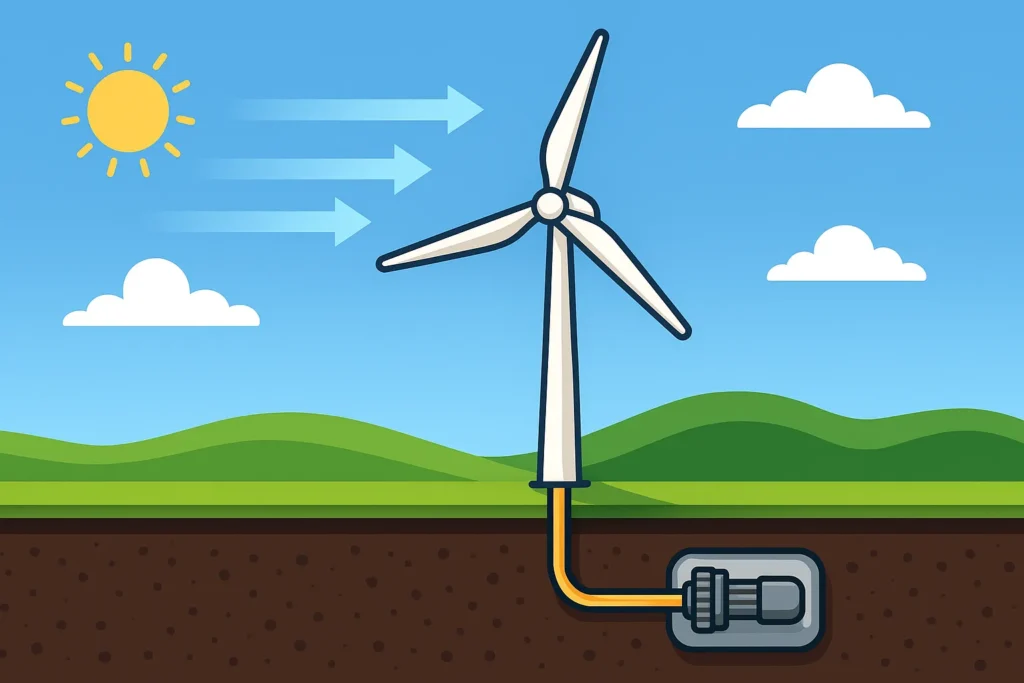Wind energy is the harnessing of blowing air to produce electricity.

Sophisticated wind turbines, which convert kinetic energy of wind into electrical power for homes, businesses, companies, and the grid, have replaced the old windmills. The technology has improved by leaps and bounds in the past decade alone, with the U.S. doubling its wind power capacity 30% annually.
The Earth’s geometry and orbit around the sun, along with the differential heating of the Earth’s surface caused by solar radiation, are the main natural causes of wind. As long as solar radiation continues to warm the Earth, wind will always be an unlimited, renewable resource.
This expanding sector is also making its presence felt on the economy. According to the U.S. Department of Energy, there are currently 41 utility-scale wind farms in operation in the United States, generating 100,000+ jobs throughout the nation, from maintenance technicians to engineers and project developers.
Example of Wind Energy
The most familiar example of wind power is the wind turbine. It harnesses the energy of the wind through massive propeller-like blades. A high tower with three long horizontal-axis blades that rotate like a giant fan is the most well-known type, though the blades can also rotate vertically.
Based on my observations, wind energy contributes to the reduction of carbon emissions while generating stable local employment.
Posted by Abu Talha
With a background in science at the A-level, Abu Talha has studied subjects including physics, chemistry, mathematics, and biology. Along with his more than 1.5 years of experience in digital marketing, he is passionate about writing about electric vehicles, sustainable energy, and how emerging technologies are influencing the future.

